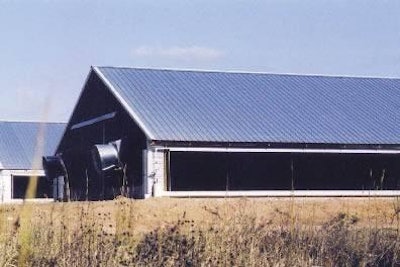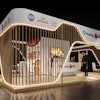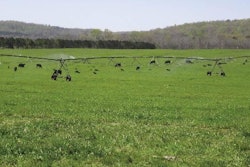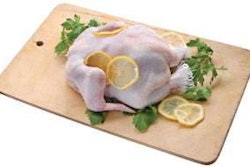
March, 2006- Contract poultry production has played a significant role in continuing the tradition of the family owned and operated poultry farm.
While poultry contracts offer benefits to growers such as reduced market risks, reduction of production responsibilities, lower operating capital requirements, and relatively predictable incomes, broiler production operations do require substantial investments for growers.
In recent months, construction, operation, and financing costs for broiler houses have increased significantly. In 2003, the average cost for a 20,000-square-foot broiler house in north Georgia was approximately $145,000 to $150,000. Current cost for comparable housing is more like $185,000 to $190,000. With today’s costs, a grower can easily invest more than $750,000 in an average size farm. Fortunately, lending agencies have been willing over the years to finance large initial investments for broiler houses because of the reliability of cash flow and debt retirement.
Poultry houses represent long-term investments (40 years or more), thus, it is important to assess the cash flow potentials of these houses when significant cost factors change. The following examples are cash flow estimates for two new (2005) 40- by 500-foot and 50- by 500-foot tunnel ventilated, solid wall broiler houses constructed in north Georgia. These cash flow estimates are based on information provided by growers, integrators, bankers and contractors currently operating in north Georgia. The values used are considered to be reasonable representations of a grower’s cash flow for the situations presented, but they are not intended to be representative of all growers’ situations. Growers may do considerably better or worse than the examples presented here.
Initial Investment. Examples of initial investments for new house construction are summarized in Table 1. Current cost for broiler houses in Georgia is around $9.00 per square foot but may be more or less depending on house type, pad costs and equipment used. Total costs for the 50-foot-wide houses for these examples exceed the costs of the 40-foot-wide houses by approximately 14 percent, but the 25 percent additional floor space provided by the wider houses results in a reduced cost of about 10 percent on a square foot basis. Four 50- by 500-foot houses would provide the equivalent floor space of five 40- by 500-foot houses but at a reduced cost. Using these numbers, four 50- by 500-foot houses would have an initial investment cost of $840,000 compared to $925,000 for the initial investment to provide the comparable floor space in five 40- by 500-foot houses (a saving of some $85,000 to the grower for the same floor space).
The fixed costs of principal and interest for these houses were computed at an interest rate of 8.25 percent and amortized over a 15-year period resulting in an annual charge of $43,074 and $48,895 for the 40-foot wide and 50-foot wide houses, respectively. Although interest rates for new house construction have increased over recent months, they are still far short of the 10 percent plus rates experienced in the 1990s. The reduced interest rates over the last four to five years have helped maintain cash flow for new house construction.
Gross Income. First year gross incomes for the two houses are presented in Table 2. Gross incomes for growers are based on examples of contract computations for average performances for house capacities, batches per year, finishing weights, capacity marketed and contract pay. Based on these computations, gross income per square foot is approximately $2.12 for these examples. Growers, however, can achieve gross income levels of $2.25 per square foot or more with consistently good flock performances or increased placements.
Cash Expenses. Examples of growers’ annual cash expenses for operation of these houses are summarized in Table 3. The primary cash cost items for growers are related to energy. Costs for ventilating and heating these houses generally exceed $7,000 per house with current fuel costs for many growers above $1.20 per gallon. In addition, grower cost can be extremely variable depending on energy prices, management skills, house construction, type of equipment and environmental conditions. This being the case, it is not unusual to see variations of 15 percent to 20 percent among growers for energy expenditures. New poultry houses normally do not require much equipment replacement in the early years; however, over time equipment replacement is required. An annualized charge of $2,000 was included in the growers’ cash costs to account for this need. Many poultry companies and bankers estimate annual grower cash costs to be approximately 30 percent of their gross income, but it is not unusual for good operators to do considerably better.
Assumptions for Examples. Cash flow budgets can be set up in many ways depending on the rates and time periods used for loan payments and the depreciation method used. These factors, as well as individual grower performances, will influence the cash flow of an enterprise. Projecting cash flow into the future is complicated by unforeseen circumstances such as changes in income and cash costs that normally occur year to year. Thus, any cash flow projection is only an estimate of what may be reasonably expected to occur given the input factors available at that time. For the cash flow analysis used in these examples, a 16-year projection with a 15-year debt retirement schedule has been used. The sixteenth year is used to demonstrate the potential for improvements in cash flow after debt retirement. Poultry houses, however, typically have productive lives of 30 to 40 years or more, so most of the returns to growers are generated during the second half of their existence. These houses should therefore be considered long-term investments.
The following criteria and assumptions are employed for these examples:
Annual Net Income is derived by subtracting annual cash expenses from gross income. Net income estimates beyond year one were increased at a rate of 2 percent annually to account for changes in contracts and grower expenses over time. An analysis of grower returns in Georgia from 1992-2002 (Bulletin 1228) indicated an average increase in grower net incomes of 2 percent per year over that period.
Depreciation is calculated using the Modified Accelerated Cost Recovery System (MACRS). Depreciation is used only to determine taxable income.
Interest is calculated at 8.25 percent for 15 years.
Taxable Income is net income minus depreciation and mortgage interest.
Net Cash Flow is the net to grower’s land, labor and management (i.e. land, labor and management not included). These budgets assume the use of family labor without the need to hire additional help. Larger operations may use hired labor that can add $1,000 to $3,000 per house to annual operating expenses. Budgets also assume land owned by grower with no associated cash costs.
Value of Litter. The value of litter at clean out is assumed to be at least equal to the cost of clean out and, therefore, is not counted as an income or cost factor for this analysis. Used litter, however, may be an asset or a liability depending on the litter management program and the individual grower’s situation. If additional equipment investments are required for manure removal, these costs will have to be factored into a grower’s budget.
Cash Flow Projections. Tables 4 and 5 demonstrate the potentials for cash flow for these broiler house scenarios. As demonstrated in these examples, cash flow for a broiler house with average revenue performance is generally moderate ($8,000 to $10,000 per 40-foot house and $12,000 to $15,000 per 50-foot house) during the early years of debt retirement. Cash flow will often decline below these levels during the last few years of the mortgage as a result of declining depreciation and interest tax deductions and increased taxable income. Once the debt is retired, a grower’s cash flow should increase substantially ($25,000 plus per 40-foot house and $35,000 plus per 50-foot house) as demonstrated in year 16 of Tables 4 and 5. How much cash flow increases at this time depends on how much if any additional capital expenditures were required for upgrades or new equipment. Although the examples used here are for average performance scenarios, it is important to note that for any given flock or year, a grower’s income may be significantly better or worse than projected. Growers can increase or decrease their annual net cash flow per house by $3,000 to $4,000 or more with above or below average performance flocks.
Summary. The costs for new broiler house construction have increased substantially over the past two years. A survey of broiler house construction for north Georgia in 2003 indicated costs in the range of $7.30 to $7.50 per square foot for standard 40- by 500-foot foot tunnel houses. Today’s costs are generally in excess of $9.00 per square foot for comparable houses. In addition, fuel prices for many growers now exceed the $1.40 per gallon level. At the same time, base contracts have increased from around the $0.048 level to $0.052 or greater to help offset the increased costs to growers and maintain cash flow. Many companies are also offering growers options to build larger houses such as the 50- by 500-foot to increase capacity and thus increase their income and cash flow. The examples presented here demonstrate the potential of the larger houses to achieve these objectives.
Broiler houses are long-term investments that provide moderate cash flow during the early years of operation but with substantial increases in cash flow possible after debt retirement. Because of the moderate early cash flow, it is not unusual for smaller farm operators to view broiler production as supplemental income until the houses are paid for. As a result, many poultry producers have started with smaller production units that have grown over time as equity and success in the business have accrued. Broiler houses, if maintained properly can have a productive span of 30 to 40 years or more, and therefore they have the potential to provide substantial income for farm families for many years. Growing broilers, however, is not a suitable business for everyone and prospective growers should carefully consider the nature of contract broiler production, the investments required and the long-term commitment before building houses.
Reference
Cunningham, D.L., 2003. Cash Flow Estimates for Contract Broiler production In Georgia: A 20-Year Analysis. The University of Georgia Cooperative Extension Service, Bulletin # 1288.





.jpg?auto=format%2Ccompress&fit=crop&h=167&q=70&w=250)











